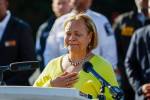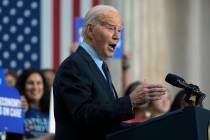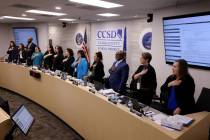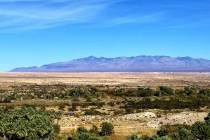Redistricting hearing: Masters’ plan heavily favors Democrats
One sure sign that new legislative district boundaries drawn by a panel of special masters are a lopsided disaster: the state Democratic Party said it had “no substantive objections” to the plan.
Just like an expert sports bettor who’d have “no substantive objections” to accepting a straight-up wager from a St. Louis fan who’s sure the Rams are going to win the Super Bowl this year, the Democrats know a lock when they see one. Only in this case, the suckers are the Nevada electorate.
Redistricting is known among cynics as the process of lawmakers deciding who their voters are. Earlier this year, the Democrat-controlled Legislature gave up on the decennial job of rebalancing district populations. Republican Gov. Brian Sandoval had vetoed Democrats’ first two attempts at guaranteeing themselves majorities in both the Senate and the Assembly for the next 10 years. When the sides became consumed by budget negotiations and found no common ground on the maps, they threw the task to the courts.
Carson City District Judge James Todd Russell appointed three special masters and ordered them to draw the new boundaries for both Nevada’s congressional and legislative districts. During a hearing today, Judge Russell will either accept the maps, reject them or order revisions.
This week, in advance of the hearing, the Democrats’ lawyers let it be known that they love the special masters’ maps and want Judge Russell to approve them. And how could they not? Not only are Democrats assured of winning at least two of the state’s four congressional seats every other year, but the legislative boundaries provide a path to the two-thirds supermajorities they need to raises state taxes and override any veto by Gov. Sandoval.
Under the maps submitted to Judge Russell, Democratic voters enjoy a registration advantage of at least 15 percentage points over Republican voters in nine of the Senate’s 21 districts. Three other districts lean Democratic. Four districts are toss-ups, where the shares of registered Democrats and Republicans are within a single percentage point.
Democrats would be locks to control nine seats, heavy favorites to win three more — which would give them a majority plus one — and contenders in four other races. By contrast, the maps create just two districts that guarantee GOP victories and three that lean Republican.
In the Assembly, 17 of the 42 districts are locks for Democrats, nine lean to them and five are toss-ups. Just four districts are locks for the GOP, and seven lean Republican.
Democrats should be expected to have some kind of advantage, considering 43 percent of the state’s registered voters are Democrats, while 35 percent are Republicans, 16 percent are nonpartisans and 6 percent are registered with other parties. But these maps would allow one-party rule even though the majority of the state’s voters are not Democrats.
Having so many uncompetitive elections, where the outcomes are predetermined, keeps viable candidates out of races and increases voter apathy. The solution is not to have a proportional number of districts that heavily favor Republicans, but to have as many toss-up districts as possible. Competitive elections tend to move candidates away from their bases and toward the middle. There’s a reason a quarter of the state’s voters aren’t affiliated with either major party: They’re sick of status-quo politics. But that’s what they’ll get if these maps become law.
Redrawing legislative districts is the duty of the Legislature. The state Constitution makes that clear. It is our hope that the Nevada Supreme Court, following a Nov. 14 hearing, will tear up the special masters’ work and order elected lawmakers to finish the job specifically delegated to them by the state’s founding document.
But hearing Judge Russell reject these maps as a horribly biased detriment to democracy would be a good start.


















